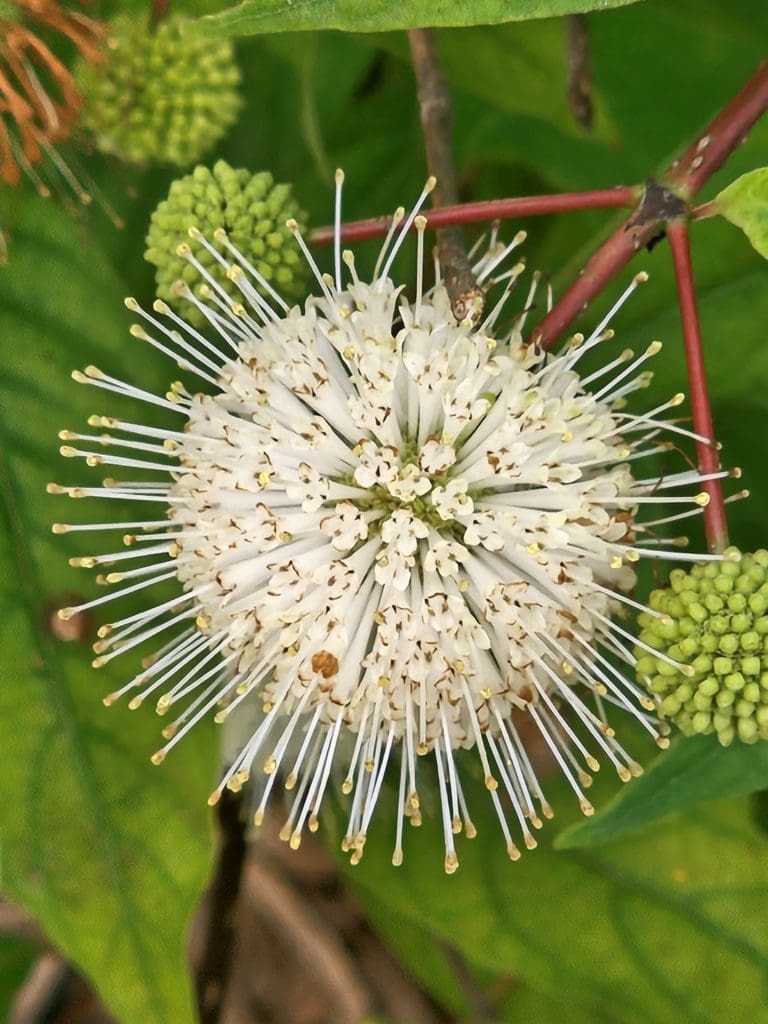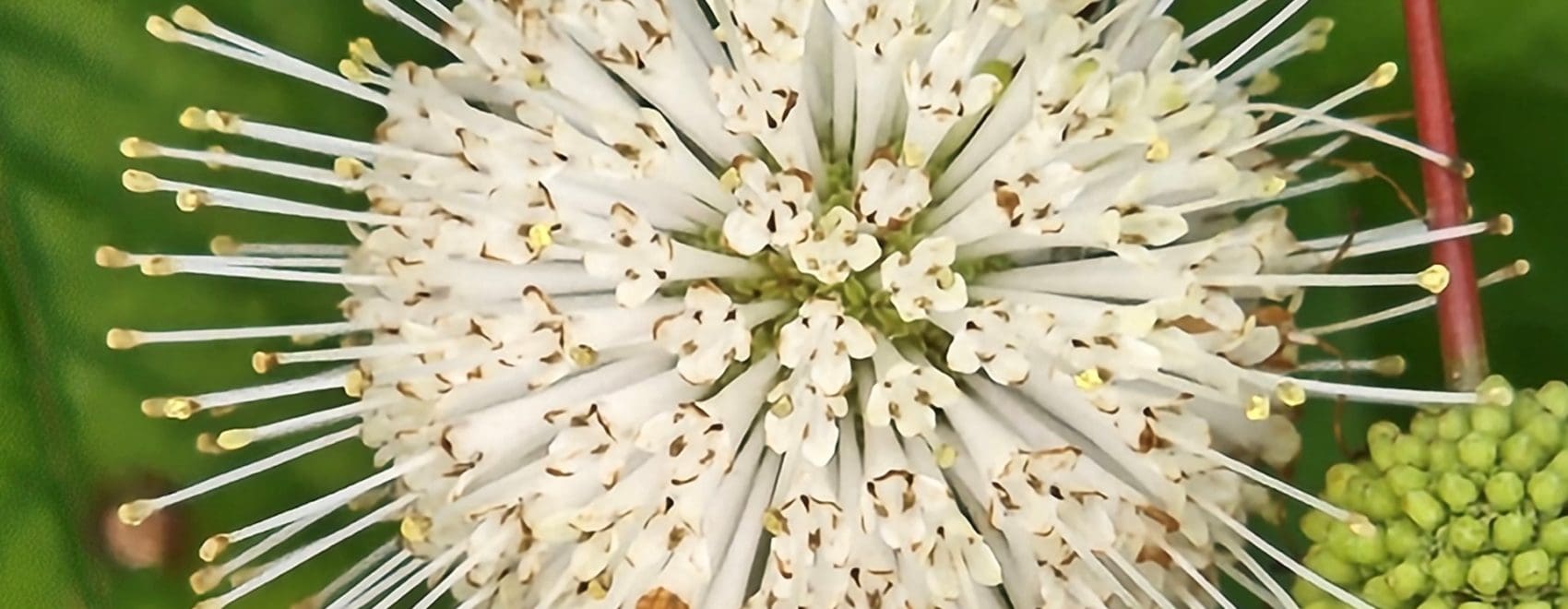Written by Kennedy Zittel, naturalist

Meandering through the butterfly garden I saw countless bumble bees buzzing by, a handful of butterflies fluttering in the breeze, and even a hummingbird moth zoom past. The garden was full of color, the purple of the blazing stars, the red of the cardinal flower, the yellow of the coneflowers, and more. What might go unnoticed if you aren’t a pollinator, is the beautiful white spherical flowers attached to (in my opinion) one of the best native shrubs. In the butterfly garden alongside the back of the nature center building you can find a buttonbush growing. Buttonbush, Cephalanthus occidentalis, is a species of flowering shrub in the Rubiaceae (coffee) family that is native to Wisconsin. This shrub can be seen in the garden, but also along some of our trails (like Willow Trail) and out in the preserve, as we have been planting it for a handful of years now. This shrub is tolerant of wet soil, and often can be found in various wetland habitats like swamps, floodplains, and in our ridges and swales. Growing anywhere from 3 – 9 feet tall (sometimes growing even taller) this shrub is a magnet for wildlife! Buttonbush has white “spikey” golfball-sized flowers that bloom mid-summer to early fall, much to the appreciation of myself and various pollinators. Bees, butterflies, moths, and hummingbirds are all frequent visitors to the shrub. During the winter there are button-like fruits that many bird species like to eat found along its branches. Now that I am thinking about it, my favorite flower is the rattlesnake master – known for its white spikey golfball-sized spherical flowers – another pollinator magnet. Maybe I have been hanging around the bees too much, or perhaps I am just enchanted by the unusual looking blooms. Either way, this shrub makes for a wonderful addition to our preserve for both visitors to enjoy, but also for many different wildlife species to enjoy year round. The one negative about working at a place like the Dunes, where you are surrounded by such interesting plants, is that the list of things I want to plant at home is always growing. Now that I have been reminded of how beautiful the buttonbush is, I have once again added another plant to the list… but to be honest, that is a pretty nice problem to have.

